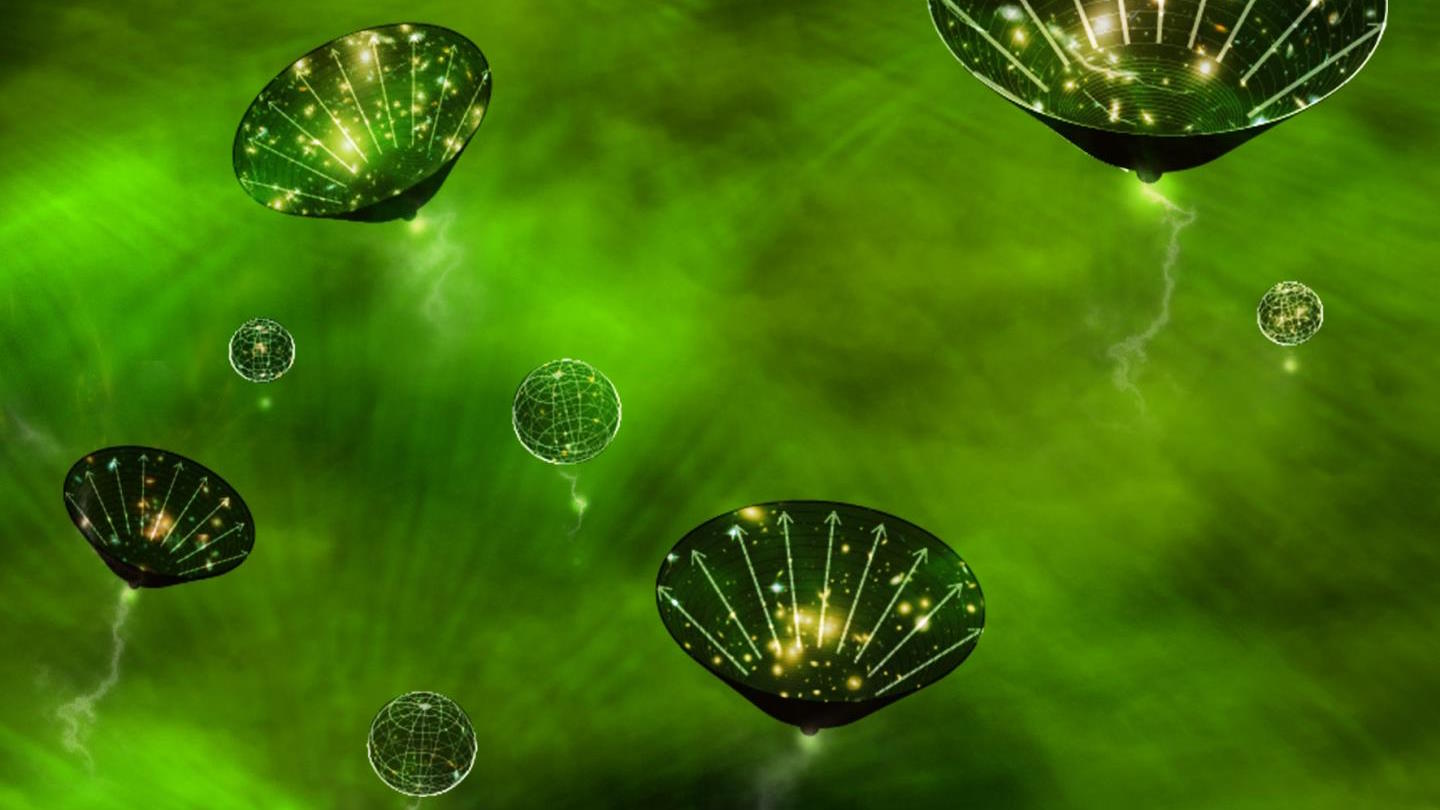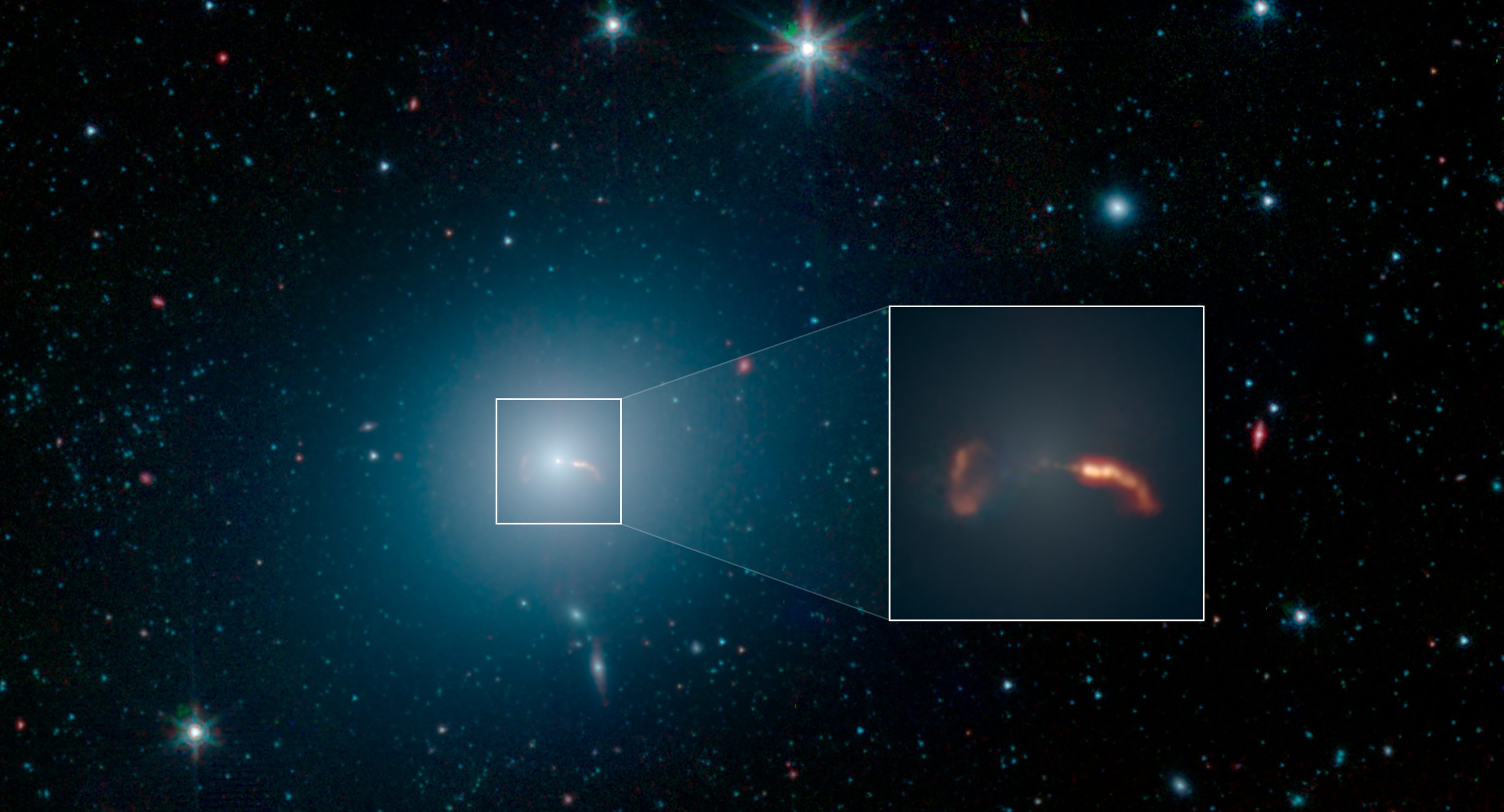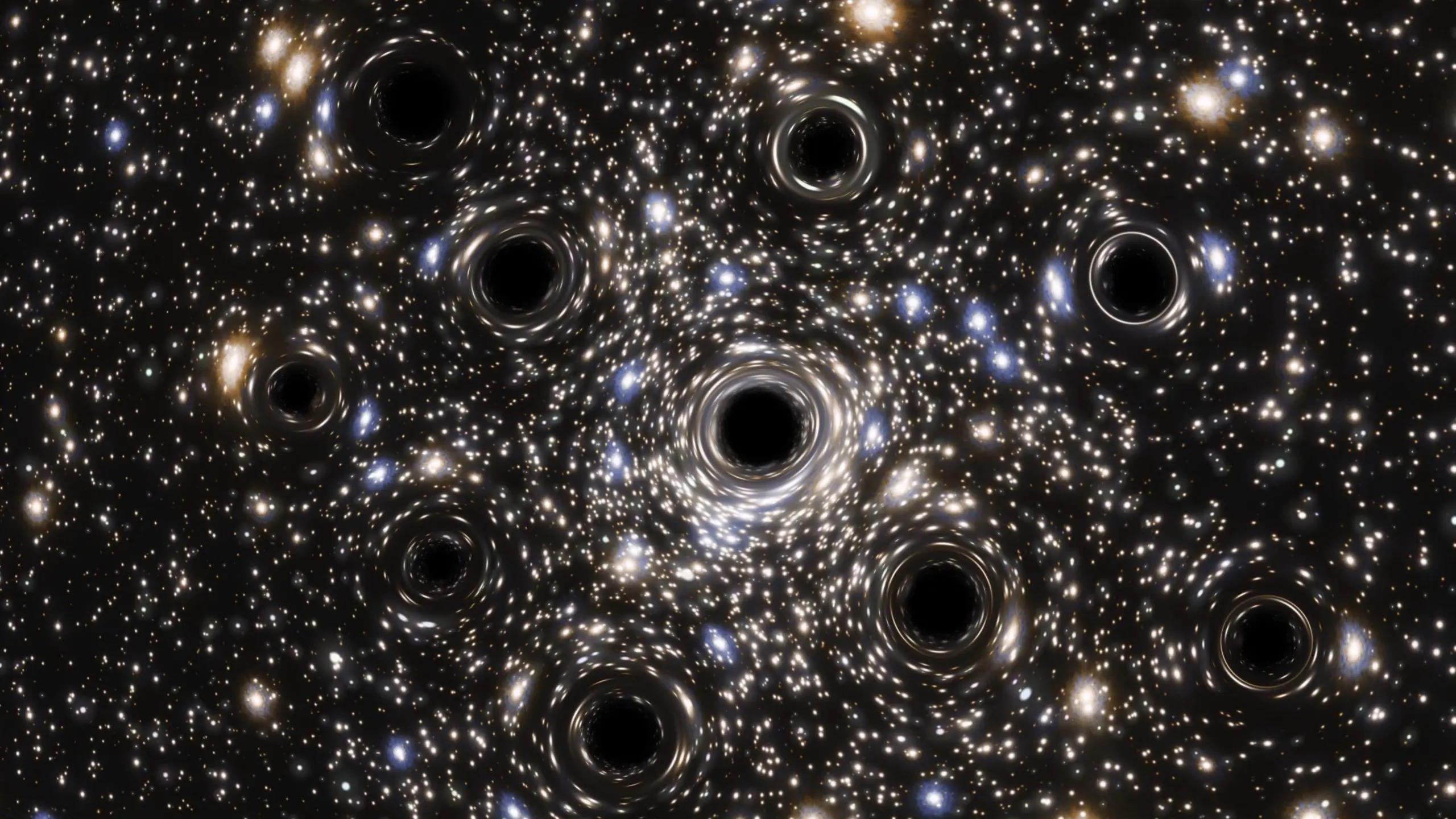Ask Ethan: Why didn’t the Big Bang become a black hole?
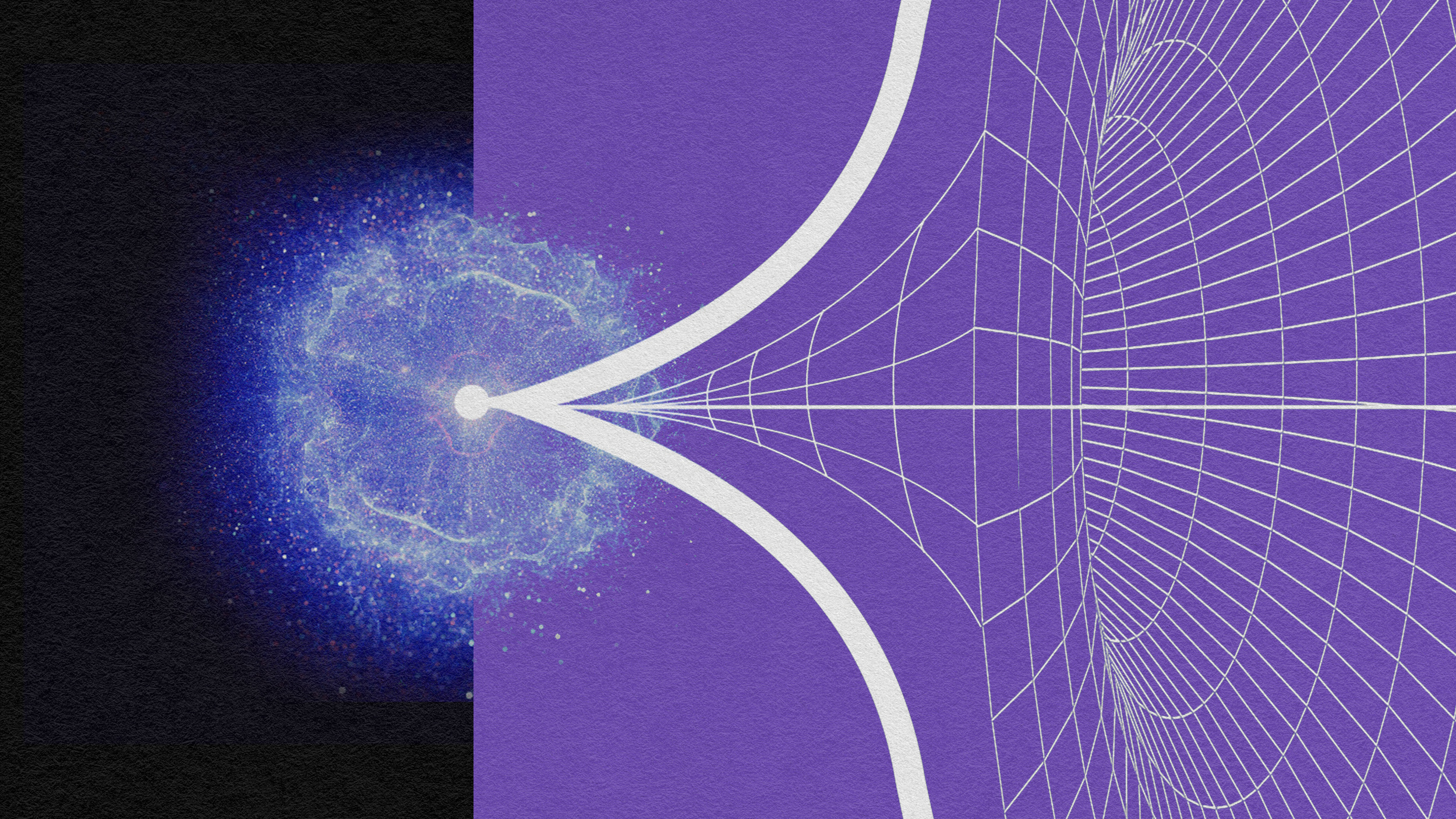
- One of the first realizations astrophysicists had about Einstein’s general relativity is that if you start off with enough mass in any initial distribution, it will eventually collapse down to a black hole.
- Today, our Universe is vast and full of stars, galaxies, and more. But early on, all of the matter and energy now strewn across billions of light-years was all bunched together in a tiny volume of space.
- If that was the situation early on in the hot Big Bang, then why didn’t our Universe simply collapse into a black hole? The resolution to this puzzle may surprise you.
Here in our Universe, despite how vast it is and how intricately we can probe it, there are still limits to what we can observe, test, and measure. We can obtain signals from very far away and infer the existence of an early, hot, dense, uniform, and rapidly expanding state: the hot Big Bang. However, even the earliest signals that we can detect don’t take us all the way back to the start of the Big Bang itself: just as close to it as we can get. It’s up to us to infer the rest. Similarly, we can only detect signals from outside of a black hole’s event horizon, both before and after the formation of a black hole. And yet, from the properties that we do observe, we can conclude that black holes exist, including their locations and masses, despite not being able to probe the interior of the black hole itself.
It’s by putting these two ideas together, the Big Bang and black holes, that led Rick Mott to ask this week’s Ask Ethan question:
“When during the Big Bang did the universe get large enough not to be a black hole? I remember reading about Alan Guth’s idea of inflation to explain the smoothness of the early universe, but if a billion and a half times the energy we currently see as matter was there at the first instant, surely the density of mass-equivalent energy greatly exceeded that of a black hole for some period of time. Is the question meaningful?”
The question is meaningful, but the answer will likely take you to places you didn’t even realize we needed to go.

The idea that black holes exist has been around for longer than most people realize: since the late 18th century, when John Michell first suggested them. He noted that if you took something like our Sun — with a known mass and volume — and simply created a bigger version of it, with more mass occupying more volume at the same density, you’d eventually reach a critical situation. At some point, with more mass gathered together in one region of space, you’d find that the escape velocity from the surface, or the speed at which you needed to move to escape from the object’s gravitational pull, would exceed the speed of light: ~300,000 km/s.
From outside of this object, you wouldn’t be able to see anything at all, as not only could light not escape from it, but no particles or signals of any type. Anything that happens within the interior of that “surface,” where the escape velocity is greater than or equal to the speed of light, can never get out. With that, the idea of a black hole was born. And a little over 100 years later, when Einstein came up with the general theory of relativity as our new theory of gravitation, the idea of a black hole became even more compelling and robust.
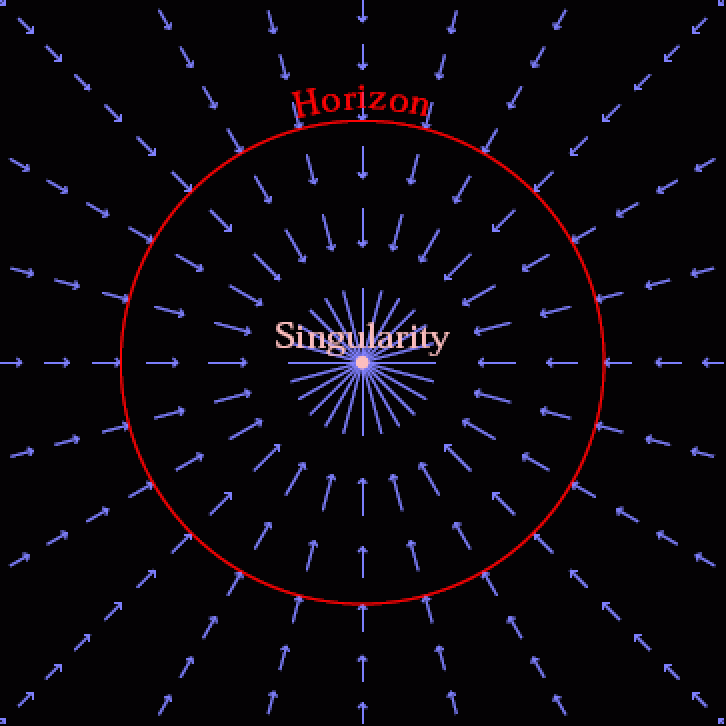
According to Einstein, it isn’t that objects have mass and massive objects attract one another through an invisible force. That conception of gravity is Newtonian, and cannot explain a whole host of observational phenomena: from the gravitational bending of light to the orbit of Mercury to the presence of gravitational waves and much more. Instead, Einstein’s revolutionary new way to view the Universe asserted that matter-and-energy alter the curvature of spacetime and affect its evolution, and that this curved and evolving spacetime tells matter-and-energy how to move within it.
If you have a point-like mass in your Universe, that creates the Schwarzschild spacetime: the spacetime that describes a non-rotating black hole. Any massive particle that you place down in that spacetime will experience the spacetime curvature induced by that black hole. If that particle is outside the black hole’s event horizon, then it could still escape from the black hole’s gravitational pull if it were moving fast enough. However, if that particle were placed inside the black hole’s event horizon, then it could never escape, and must instead wind up at the central point — the singularity — after a finite and calculable amount of time.

What was remarkable about black holes in general relativity is how easy they were to produce, theoretically, as well as how difficult they were to avoid. One of the earliest results that Einstein was able to show is illustrated above. It’s that if you began with:
- flat, static, unchanging spacetime,
- and you put down a set of stationary, pressureless masses within it (i.e., “dust” particles),
- and you allowed those masses/particles to evolve,
- then they would all gravitate,
- and in very short order, you’d inevitably form a non-rotating black hole, event horizon and all.
It’s as though you have to have something else at play to avoid forming a black hole from an initial distribution of masses. Normally, that “something else” is some type of pressure that holds matter up against further collapse. Atoms have a pressure from the electron clouds around them. Stars have a pressure from the radiation generated through nuclear fusion. But for massive enough stars — or massive enough collections of matter in general — it’s possible to overcome that pressure and create a black hole after all. This was famously shown in the mid-20th century by Roger Penrose, who won a Nobel Prize for his efforts to show how black holes can realistically form within our Universe.

But now we’re moving onto an even bigger question: what about the entire Universe becoming a black hole? If the Universe were initially static — i.e., describable by a non-evolving spacetime — then filling the Universe with large amounts of matter, radiation, or energy of any form would lead to it quickly collapsing. Energy causes space to curve and evolve, and “curve and evolve” doesn’t just mean to distort a fabric with peaks and valleys in it, but also includes allowing that space to either expand or contract.
One of the most remarkable, and perhaps underappreciated, aspects of Einstein’s equations is also a feature of many other equations in physics: they often have multiple solutions to them.
When you throw a ball up into the air, you can write down equations that tell you when it will come down and hit the ground. And if you solve those equations, you’ll find something that you perhaps didn’t expect: you’ll get two answers. One of those answers will correspond to the physical scenario you’re interested in: when the ball hits the ground after you’ve thrown it up into the air. The second of those answers, however, will correspond to an unphysical scenario: the one where the ball would have started off on the ground prior to being thrown, assuming it was moving even faster than before you threw it.
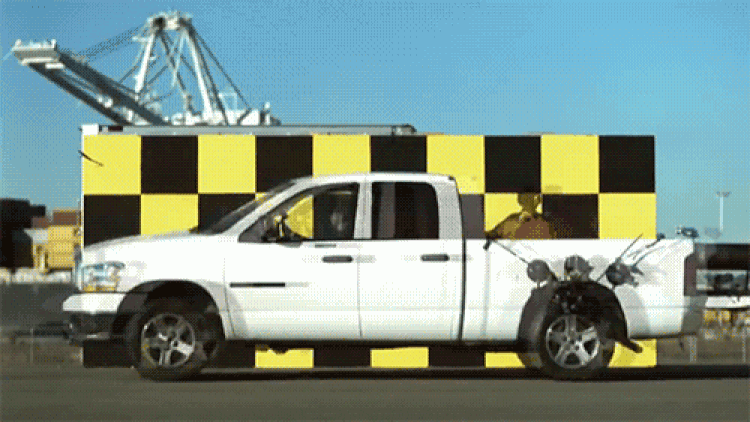
There is no mathematical trick you can use to tell you which of these two solutions corresponds to our physical reality. This simple example encapsulates the entire, profound difference between physics and math: physics has to look to reality to tell us which of the possible solutions actually matches reality. The “positive time” solution is the one we’re looking for in this case, so we ignore the other (unphysical) solution and proceed from there.
Similarly, if you take a Universe and fill it uniformly with any species of energy that you like:
- normal matter,
- dust,
- dark matter,
- radiation,
- neutrinos,
- or dark energy/a cosmological constant/field energy during inflation,
you’ll find that there are two valid solutions within Einstein’s equations that emerge: one that corresponds to an expanding Universe, where the distance between any two points increases with time, and one that corresponds to a contracting Universe, where the distance between any two points decreases with time.
So which one of these two possible scenarios actually corresponds to our own physical reality? From a physicist’s perspective, we have no choice but to look to our Universe itself for the answer.

As has been definitively known since the late 1920s, or nearly a full 100 years at this point, our Universe is indeed expanding: that’s the situation that corresponds to our physical reality. Moreover, measurements of the expansion rate across cosmic history — which can tell us how the expansion rate has changed over time — show a tremendous consistency with the solution of Einstein’s equations that correspond to an expanding Universe where, today, it’s composed of:
- 68% dark energy,
- 27% dark matter,
- 4.9% normal matter,
- 0.1% neutrinos,
- around 0.01% photons,
- and a negligible amount of everything else.
In the past, the Universe was expanding more rapidly, and as time continues forward, the expansion rate continues to decrease, where it will eventually approach about 80-85% of its present value.
If we go back in time, however, either to the early initial state of the hot Big Bang, where all of the energy was in the form of particles and antiparticles, or even earlier to the preceding period of cosmic inflation, where all of the energy was in the form of energy inherent to space itself (i.e., the field energy of inflating space), we still can’t get rid of that initial expansion. It must have also been present, even all the way back some ~13.8 billion years ago.

That’s where the key to the answer lies! The Universe is expanding today, the expansion rate is decreasing with time, and hence in the past the Universe must have been hotter, denser, smaller, and more uniform. What’s also true — although we don’t often emphasize it — is that the expansion rate must have been much larger in the distant past as well: closer to the Big Bang as well as before, during the period of cosmic inflation that preceded it.
If we didn’t have this physical information about the Universe, we wouldn’t have enough information from theory alone to answer the question. Instead, there would’ve been several possibilities for how the matter-and-energy in the Universe related to the curvature and evolution of spacetime.
- The Universe could’ve begun by contracting, and the matter/energy within it would have led it to collapse: either to a Big Crunch or into a black hole.
- The Universe could’ve begun stationary and static, and the matter/energy within it would have led it to collapse: either to a Big Crunch or into a black hole.
- Or the Universe could’ve begun by expanding, and the matter/energy within it could lead to a recollapse, an eternal expansion, or the critical case, where the expansion and the matter/energy contents of the Universe were perfectly balanced.
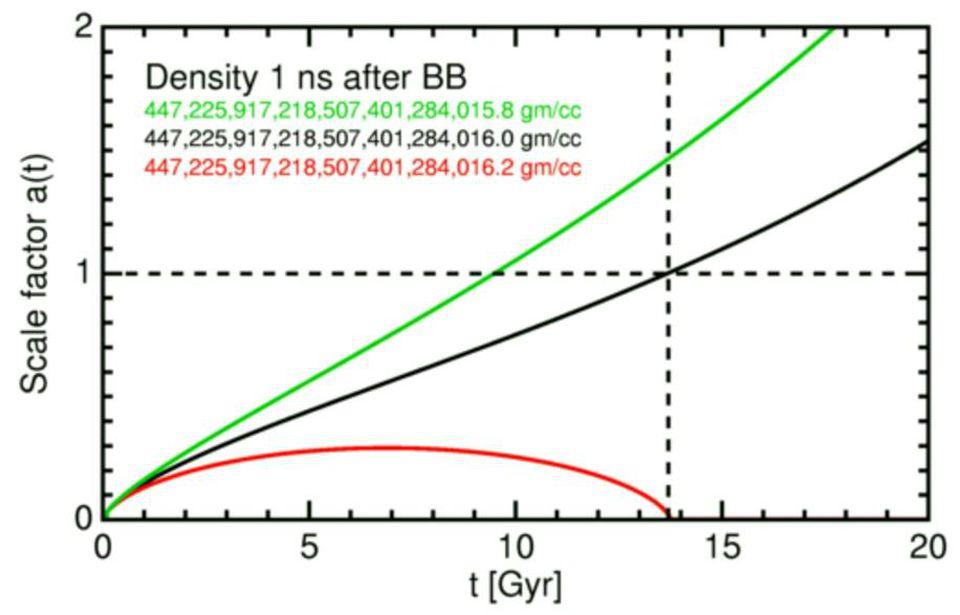
Because the Universe exists and hasn’t already collapsed into a black hole (or hasn’t already ended in a Big Crunch), we can rule out the options of an initial contraction or an initially static Universe. In fact, it was actually by considering the specifics of that third possibility that we arrived at the theory of inflation in the first place. It’s extremely difficult, you see, to contrive that these two seemingly unrelated phenomena:
- the initial rate of expansion at the start of the hot Big Bang,
- and the total sum of all the different forms of energy density that existed way back when,
would balance perfectly. It’s as though we conducted a cosmic lottery where we had the entirety of the Sun to consider, and we just happened to choose the winning subatomic particle.
This is what we call a fine-tuning problem in physics: where it seems like all of the possible outcomes were equally likely, but somehow the Universe arrived at a very unlikely outcome. It was by searching for and finding a mechanism that could explain why these two properties were balanced — an early phase of energy-inherent-to-space dominating the expansion (i.e., inflation) — that led to the revelation of what precisely happened before the Big Bang occurred.

Even though we recognize that matter and energy curve space, and that curved space then tells matter how to move, we often omit an important aspect of how space curves in our head: it can curve by expanding or contracting as well. It’s only because the Universe that we know began by expanding — and expanding not only rapidly, but in practically perfect balance with the matter-and-energy density that was present at every moment — that the Universe didn’t collapse in on itself almost immediately after its beginning. The expansion must have happened at the start of the hot Big Bang and even before: during cosmic inflation. If it weren’t for this property, this “initial condition” of the Universe, then collapse would have been inevitable.
What happens to spacetime isn’t solely dependent on the matter-and-energy within it, but also depends on the prior history of the Universe up to that point. If we could somehow “turn off” the cosmic expansion today while leaving the properties of the Universe the same, its fate would no longer be as certain as it is today. It could expand or it could contract on the largest scales, and it’s only by measuring which one it’s actually doing that we can figure out what its future will hold. Thankfully, our Universe has obeyed these laws always and under all conditions, and so simply by measuring what it’s doing today, we can learn what it was like in the distant past and what it will be like in the far future. When you fold in what we’ve actually observed along with our theoretical predictions, there’s only one story for the Universe that truly adds up.
Send in your Ask Ethan questions to startswithabang at gmail dot com!
